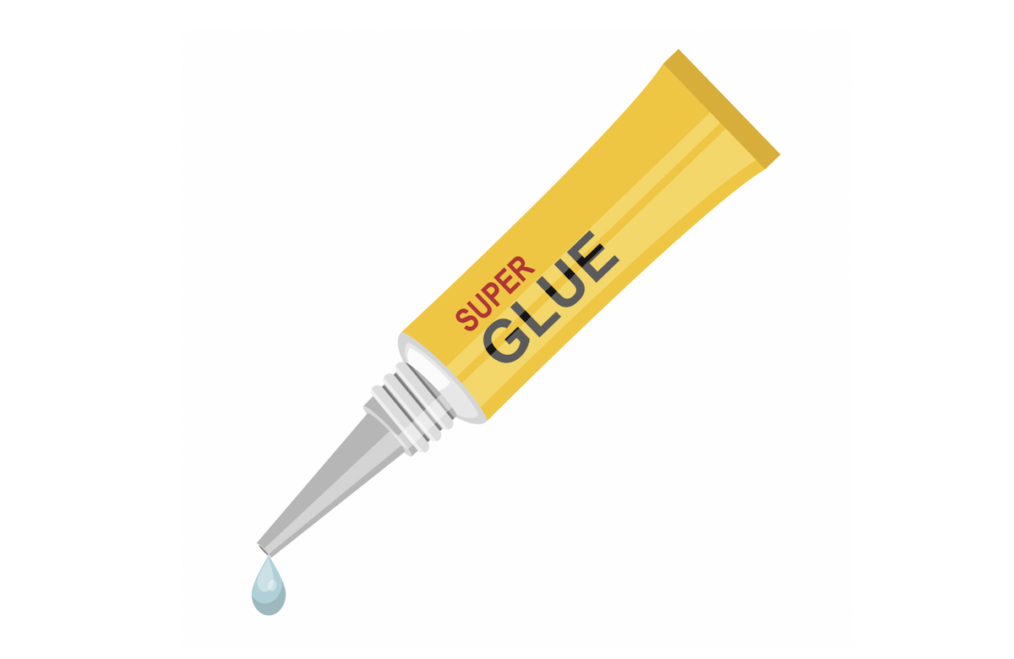
Diagnosis Psychosis
Have you have ever used super glue? You are confronted with sticky fingers in a matter of seconds. No matter how hard you try to remove it, it just sticks to you. When you thought that you finally found a tip on the internet to remove it, you are still left with residue. People diagnosed with psychotic disorders have a similar problem. They are confronted with stigma that acts just like superglue and is very difficult to leave behind. The stigma includes assumptions of other people that the patient is dangerous, probably cannot take care of her- or himself and has a significant fault on his own diagnosis. As soon as someone has these thoughts or even acts on them the damage is done and the stigma sticks to the patient.
While completing an internship in a psychiatric hospital, I worked closely with patients diagnosed with a psychotic disorder. A psychotic disorder is characterized by five symptoms. Patients might experience delusions (wrong beliefs where experiences or perceptions are misinterpreted), hallucinations (experiencing something that is not there which can happen with any of the five senses), disorganized thinking, abnormal motor behavior, and negative symptoms such as withdrawing from social interactions or showing less emotions (American Psychiatric Association, 2013). Every single patient was shocked when they learned about the diagnosis of a psychotic disorder. They started asking questions like: What am I supposed to tell my boss? How will my friends react? What will my family say? They were so afraid of other people’s reaction towards them that they denied having enough symptoms for this diagnosis.
Furthermore, they were terrified how they were going to explain the diagnosis to their loved ones but also how their colleagues would act upon the disorder. This stems from hearing reports that many people suffer stigmatization in their job. Companies frequently have the misconception that people with a psychotic disorder could harm colleagues or are irresponsible therefore unfit to work. Those beliefs continue also after the patient has fully regained their health. Almost always people with a mental disorder are given more blame for their own illness than people suffering from a physical illness. This should and has to change.
The media play a large role in intensifying the stigma that surrounds psychotic patients. News coverage about tragedies, such as the plane crash in the French Alps when Andreas Lubitz committed suicide¹, portray a negative picture on people with mental disorders. This gets boosted by the fact that people tend to remember information best that is the most available to them. Due to the lack of appropriate information the public cannot develop a more objective picture of people with mental disorders.
In order to increase knowledge about psychotic disorders a variety of different routes can be pursued. The first thing that can be done to minimize public stigma is to encourage the media to portray psychotic disorders less negatively and instead educate the public about mental disorders. The media could not only stop portraying negative pictures but also enforce positive beliefs to counteract the negative ones. Until this works effectively, everybody can start on their own to stop believing the negative pictures portrayed and educate themselves about mental disorders (Corrigan & Watson, 2002). Furthermore, any contact with mentally ill patients helps reducing stigma. The public could spend more time with patients to understand the disorders better and be more tolerable. This could already be done in school, so children grow up with a better understanding of psychotic disorders and stigmatize patients less as adults. Being more accepting of mental disorders makes people less afraid to admit that they have a problem and seek the help that they need. Providing people with a safe space to find help also assists the companies because it reduces the loss, they are suffering due to their employee’s illness. Lastly, conferences like the 9th International Conference Together Against Stigma will raise the awareness and bring a change in the fight against stigmatization of mental illness (https://againststigma2019.com).
By way of illustration, approximately 20 million people around the world are diagnosed with Schizophrenia (Ritchie & Roser, 2018). That are 3 people out of a 1000 and that is only for one disorder belonging to the category of psychotic disorders. Breaking this down to the population of Groningen, this means that about 600 people are diagnosed with Schizophrenia. So, the chances are high that wherever in the world you live, you will meet someone being diagnosed with a psychotic disorder. It is now your choice whether you want to superglue a stigma onto them or facilitate their treatment by being understanding and positive around them.
Relevant Links and References
¹https://www.youtube.com/watch?v=VrzLDV8QI9I
American Psychiatric Association. (2013). Diagnostic and statistical manual of mental disorders : Dsm-5(5th ed.). Arlington, VA: American Psychiatric Association.
Corrigan, P., & Watson, A. (2002). Understanding the impact of stigma on people with mental illness. World Psychiatry : Official Journal of the World Psychiatric Association (wpa),1(1), 16-20.
Ritchie, H., & Roser, M. (2018, January 20). Mental Health. Retrieved August 9, 2019, from https://ourworldindata.org/mental-health



